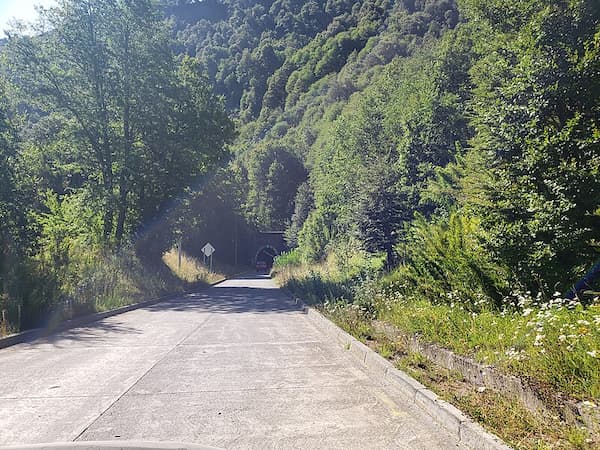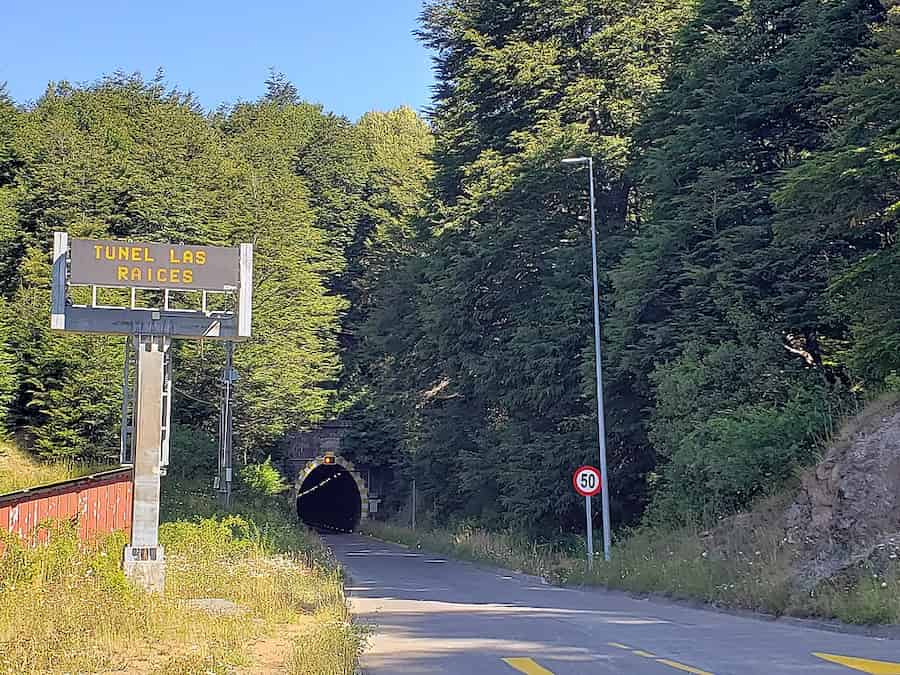In the heart of the Andes Mountains, in the Araucanía region of Chile, lies a masterpiece of engineering: the Las Raices Tunnel. With a length of 4,528 meters, it holds the title of the longest tunnel in Chile and the sixth longest in Latin America. Built in 1939, it connects the communes of Curacautín and Lonquimay, traversing the Las Raices mountain range at an altitude of 1,010 meters. Its history, marked by tragedy and human achievement, makes it a unique and fascinating place.
- Location: It is located on Route 181, in the Araucanía region, Chile
- Length: 4,528 meters
- Elevation: 1,010 meters above sea level
- Year of construction: 1939
- Toll: Yes, a toll of approximately $1 per vehicle is charged

History of the tunnel
Crossing the Andes was a titanic challenge that could only be overcome with such a monumental feat.
Originally conceived as a railway tunnel for a bi-oceanic train project that would connect the ports of Talcahuano in Chile and Bahía Blanca in Argentina, the tunnel became an important vehicular passage after the disappearance of the railway line. Its construction lasted ten years, with a significant investment of over 32 million pesos at the time.
Thousands of workers, many of them indigenous Mapuche, faced extreme weather conditions and rugged terrain to bring this stone giant to life.
This landmark of Chilean engineering, in addition to facilitating connectivity between communities, has witnessed tragedies, such as the avalanche that buried 42 workers for over ninety hours inside, highlighting the challenges and risks associated with its operation and maintenance.

Las Raices Tunnel Construction
Lais Raices tunnel today
In 1988, the Las Raices Tunnel was converted into a road tunnel, allowing for better connectivity between the Araucanía and Biobío regions.
The tunnel has undergone several renovations over the years, with the most recent in 2005, which included total paving, installation of lighting, and traffic lights, thus improving transit conditions and safety for users.
Currently, it is part of Route 181, which connects Lonquimay with Victoria, and serves as part of a bi-oceanic corridor between the Pacific and Atlantic, connecting Lebu in Chile with Bahía Blanca in Argentina through the Pino Hachado Pass. With an average daily traffic of about 450 vehicles, it plays a crucial role in the transportation of goods and people in the region.
The Las Raices Tunnel represents not only an essential road infrastructure for Chile but also a symbol of history and progress in the Araucanía Region, contributing to its economic and social development.
Featured image: Wikimedia Commons













